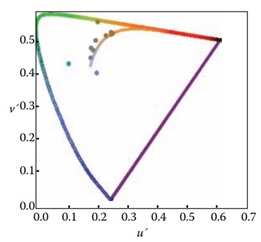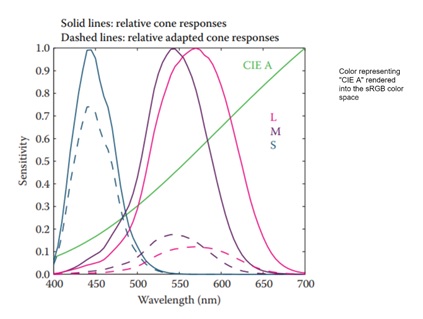
- Computer Graphics - Home
- Computer Graphics Basics
- Computer Graphics Applications
- Graphics APIs and Pipelines
- Computer Graphics Maths
- Sets and Mapping
- Solving Quadratic Equations
- Computer Graphics Trigonometry
- Computer Graphics Vectors
- Linear Interpolation
- Computer Graphics Devices
- Cathode Ray Tube
- Raster Scan Display
- Random Scan Device
- Phosphorescence Color CRT
- Flat Panel Displays
- 3D Viewing Devices
- Images Pixels and Geometry
- Color Models
- Line Generation
- Line Generation Algorithm
- DDA Algorithm
- Bresenham's Line Generation Algorithm
- Mid-point Line Generation Algorithm
- Circle Generation
- Circle Generation Algorithm
- Bresenham's Circle Generation Algorithm
- Mid-point Circle Generation Algorithm
- Ellipse Generation Algorithm
- Polygon Filling
- Polygon Filling Algorithm
- Scan Line Algorithm
- Flood Filling Algorithm
- Boundary Fill Algorithm
- 4 and 8 Connected Polygon
- Inside Outside Test
- 2D Transformation
- 2D Transformation
- Transformation Between Coordinate System
- Affine Transformation
- Raster Methods Transformation
- 2D Viewing
- Viewing Pipeline and Reference Frame
- Window Viewport Coordinate Transformation
- Viewing & Clipping
- Point Clipping Algorithm
- Cohen-Sutherland Line Clipping
- Cyrus-Beck Line Clipping Algorithm
- Polygon Clipping Sutherland–Hodgman Algorithm
- Text Clipping
- Clipping Techniques
- Bitmap Graphics
- 3D Viewing Transformation
- 3D Computer Graphics
- Parallel Projection
- Orthographic Projection
- Oblique Projection
- Perspective Projection
- 3D Transformation
- Rotation with Quaternions
- Modelling and Coordinate Systems
- Back-face Culling
- Lighting in 3D Graphics
- Shadowing in 3D Graphics
- 3D Object Representation
- Represnting Polygons
- Computer Graphics Surfaces
- Visible Surface Detection
- 3D Objects Representation
- Computer Graphics Curves
- Computer Graphics Curves
- Types of Curves
- Bezier Curves and Surfaces
- B-Spline Curves and Surfaces
- Data Structures For Graphics
- Triangle Meshes
- Scene Graphs
- Spatial Data Structure
- Binary Space Partitioning
- Tiling Multidimensional Arrays
- Color Theory
- Colorimetry
- Chromatic Adaptation
- Color Appearance
- Antialiasing
- Ray Tracing
- Ray Tracing Algorithm
- Perspective Ray Tracing
- Computing Viewing Rays
- Ray-Object Intersection
- Shading in Ray Tracing
- Transparency and Refraction
- Constructive Solid Geometry
- Texture Mapping
- Texture Values
- Texture Coordinate Function
- Antialiasing Texture Lookups
- Procedural 3D Textures
- Reflection Models
- Real-World Materials
- Implementing Reflection Models
- Specular Reflection Models
- Smooth-Layered Model
- Rough-Layered Model
- Surface Shading
- Diffuse Shading
- Phong Shading
- Artistic Shading
- Computer Animation
- Computer Animation
- Keyframe Animation
- Morphing Animation
- Motion Path Animation
- Deformation Animation
- Character Animation
- Physics-Based Animation
- Procedural Animation Techniques
- Computer Graphics Fractals
Chromatic Adaptation in Computer Graphics
Chromatic adaptation helps in maintaining the consistency of colors as perceived by human eyes, even when the lighting conditions changes. This concept plays an important role in various applications, starting from image processing to computer rendering. In this article, we will explain the basics of chromatic adaptation, how it works, and see some examples of its usage in computer graphics.
What is Chromatic Adaptation?
Chromatic adaptation means the human eye's ability to adjust to different lighting conditions and maintain color constancy. For example, a white object appears white whether it is under sunlight, fluorescent light, or candlelight. The human visual system accomplishes this through chromatic adaptation. It allows us to largely ignore variations in lighting color.

Types of Adaptation
In general, adaptation can be divided into three types −
- Light Adaptation − When we move from a dark to a bright environment, our eyes take a moment to adjust to the new light levels. Initially, the light may seem too strong. After a short period, we adapt and can clearly see objects.
- Dark Adaptation − The reverse happens when we move from a bright to a dark environment. Initially, we see very little. Over time, our eyes adjust, and we can distinguish more details in the dark.
- Chromatic Adaptation − This refers to our ability to adjust to different lighting colors. Even though the light changes, the perceived color of objects stays relatively constant. For example, a white sheet of paper appears white in different lighting conditions because our visual system adjusts the color perception.
Color Constancy
Chromatic adaptation is closely related to the concept of color constancy. This is the ability of the visual system to maintain the appearance of object colors under varying illumination. When color constancy shows how to perceive consistent colors, but it is not perfect.
For instance, colors tend to look more vibrant on sunny days than on cloudy ones. Even though the lighting affects the appearance of colors, we do not assume that the object's color properties have physically changed.
Chromatic Adaptation in Computer Graphics
In computer graphics, chromatic adaptation shows how colors look natural under different lighting conditions. Modern cameras and image-processing software often incorporate a white balancing feature, which is used for chromatic adaptation.
White balancing adjusts the color of an image to compensate for the lighting conditions that white objects appear white and other colors remain accurate.
White Balancing in Cameras
Chromatic adaptation in cameras works similarly to how the human eye adjusts to changes in light. For example, in a digital camera, the white balance function compensates for the color temperature of the light source. The camera normalizes the scene to present an accurate color representation, much like the human visual system.
An example of chromatic adaptation in computer graphics is the von Kries adaptation model. This model assumes that each type of cone in the human eye adapts independently to the light it absorbs. The cones responsible for detecting red, green, and blue light adjust based on the illumination in the scene.
Von Kries Adaptation Model
The von Kries adaptation model is one of the simplest models for chromatic adaptation. It operates on the assumption that different cone types adapt independently to the energy they absorb. This process can be modelled by independently rescaling the cone signals for each type of cone.

The formula used for this process is −
$$\mathrm{L_a \:=\: \alpha L}$$
$$\mathrm{M_a \:=\: \beta M}$$
$$\mathrm{S_a \:=\: \gamma S}$$
Where,
- (La, Ma, Sa) are the chromatically adapted cone signals,
- L, M, S are the original cone signals,
- α, β, γ are the gain controls determined by the viewing environment.
This model works by scaling the cone responses based on the illumination. For example, if the illumination is from daylight, the cones will adjust accordingly. The same object will appear in the same color even if the light source changes to incandescent light. This scaling process helps maintain consistent color appearances under varying lighting conditions.
Chromatic Adaptation in Rendering
In rendering also there are great use of this concept. Chromatic adaptation helps maintain consistency when an image is displayed under different lighting conditions. Scenes are often rendered with a specific light source in mind. However, once the image is displayed on different devices or in different environments, the lighting conditions may change.
By applying chromatic adaptation, we can adjust the rendered image to match the viewing environment without having to re-render the scene.
Post-Processing for Chromatic Adaptation
One of the advantages of chromatic adaptation in rendering is that it can be applied as a post-processing step. This means that after the scene is rendered, we can correct the image for the lighting conditions of the viewing environment. For example, if an image is rendered for daylight but viewed under indoor lighting, chromatic adaptation can adjust the colors to maintain consistency.
However, to avoid introducing artifacts during chromatic adaptation, it is essential to render the image in a floating-point format. If the image is rendered in an 8-bit format, the chromatic adaptation process may amplify quantization errors which will make unwanted artifacts.
Computing Corresponding Colors
In many cases, we need to compute corresponding colors for different lighting conditions. For example, if an object is illuminated by daylight, we might need to determine the corresponding color when it is illuminated by incandescent light. This process is achieved by performing two chromatic adaptation calculations.
Cascading Chromatic Adaptation
To compute corresponding colors, we first divide out the original illumination using the von Kries adaptation model. Then, we multiply in the new illumination to compute the corresponding color. For example, if we have a colored patch illuminated by daylight, we can compute the tristimulus values for a corresponding patch illuminated by incandescent light.
This method allows us to maintain accurate color representation across different lighting conditions without physically changing the scene or its properties.
Conclusion
In this chapter, we explained the concept of chromatic adaptation and its role in computer graphics. We started by understanding what chromatic adaptation is and how it helps the human visual system maintain color constancy under different lighting conditions.
We discussed the von Kries adaptation model, which is commonly used in computer graphics to simulate chromatic adaptation. We also understood the application of chromatic adaptation in cameras and rendering, showing the importance of white balancing.